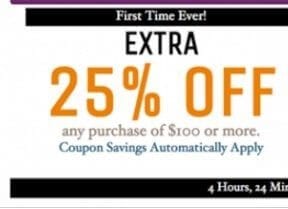For many ecommerce retailers, generating sales is often a race to the bottom to offer prices lower than their competitors. While this can be good for consumers, it’s usually bad for sellers. They can end up with thin gross profit margins that are less than their shipping and fulfillment costs.
One way to overcome the race-to-the-bottom trap is through multi-unit sales.
Why Multi-unit Sales?
Here are simplified income statements to illustrate the benefit of multi-unit sales by comparing a single-unit sale and two units.
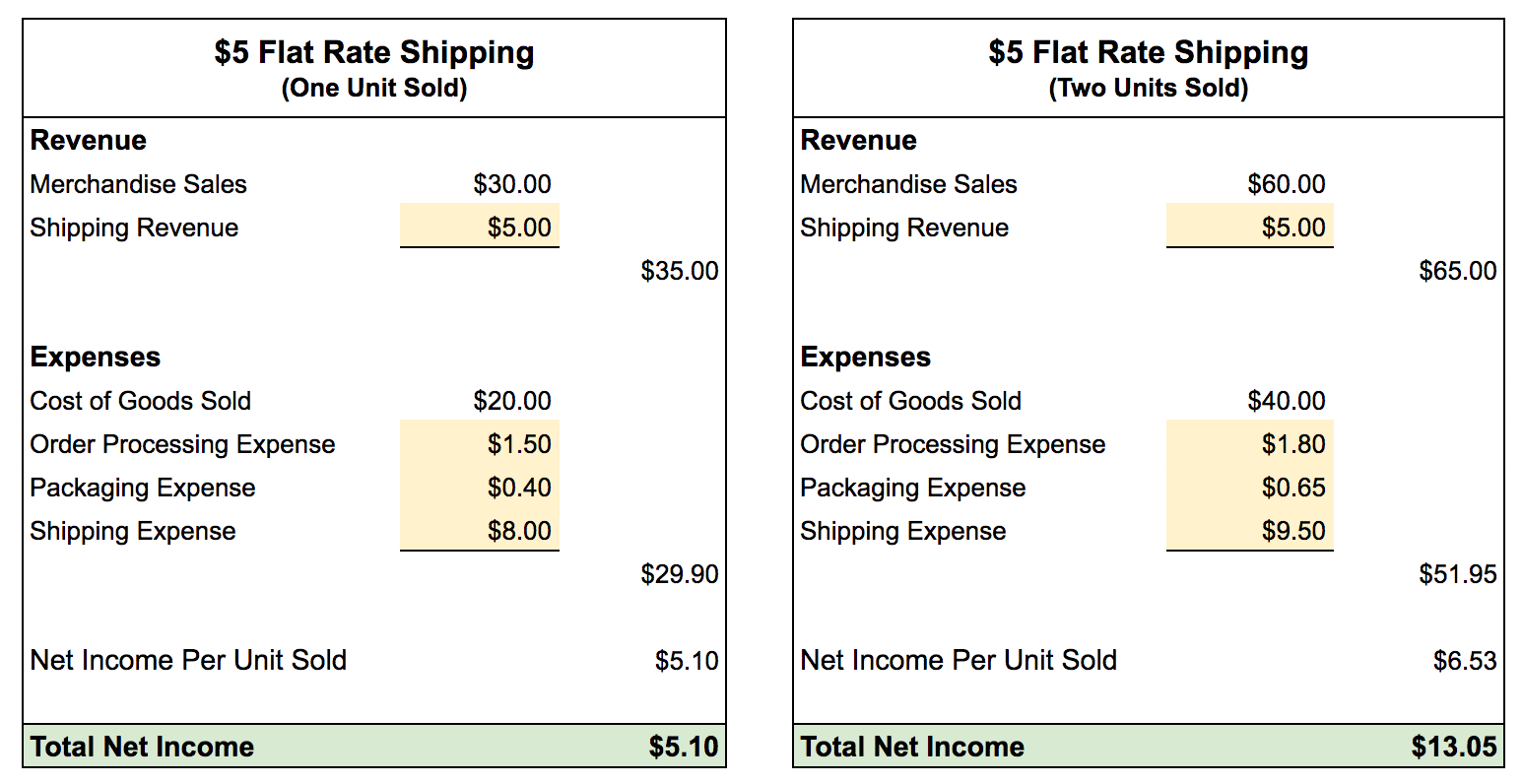
In this example, offering flat rate shipping for $5 produces a net income of $5.10 for a single unit sold. When two units are sold, the net income increases to $13.05. (Click image to enlarge.)
The above example assumes that the two units are the same with the same selling price and inventory cost. Each unit has a ship weight of two pounds, and, in this example, the seller has a flat rate shipping offer of $5.
Note that while Cost of Goods Sold doubles when you sell two units, the order fulfillment and shipping expenses do not. Here is a breakdown of the added cost (as a percentage) to the seller with two units sold instead of one.
- Cost of Goods Sold: 100 percent increase.
- Order Processing Expense: 20 percent increase.
- Packaging Expense: 63 percent increase.
- Shipping Expense: 19 percent increase.
While the numbers in this example are hypothetical, the logic is not. When a seller processes and ships an order with two units, its overall variable expenses are generally much less than if it had sold just one. Thus, not only did the total net income more than double, the per unit net income also increased.
But how, exactly, can an ecommerce seller get more multi-unit sales? Here are four ways.
4 Ways to Increase Multi-unit Sales
Minimum threshold for free shipping. Consumers love free shipping. But shipping isn’t cheap. That’s why it’s common for sellers to have an order value threshold tied to their free shipping offer; it helps ensure there’s enough margin in the order.
Below is an updated income statement showing how the numbers look when the seller offers free shipping, instead of the $5 flat rate shipping scenario, above.
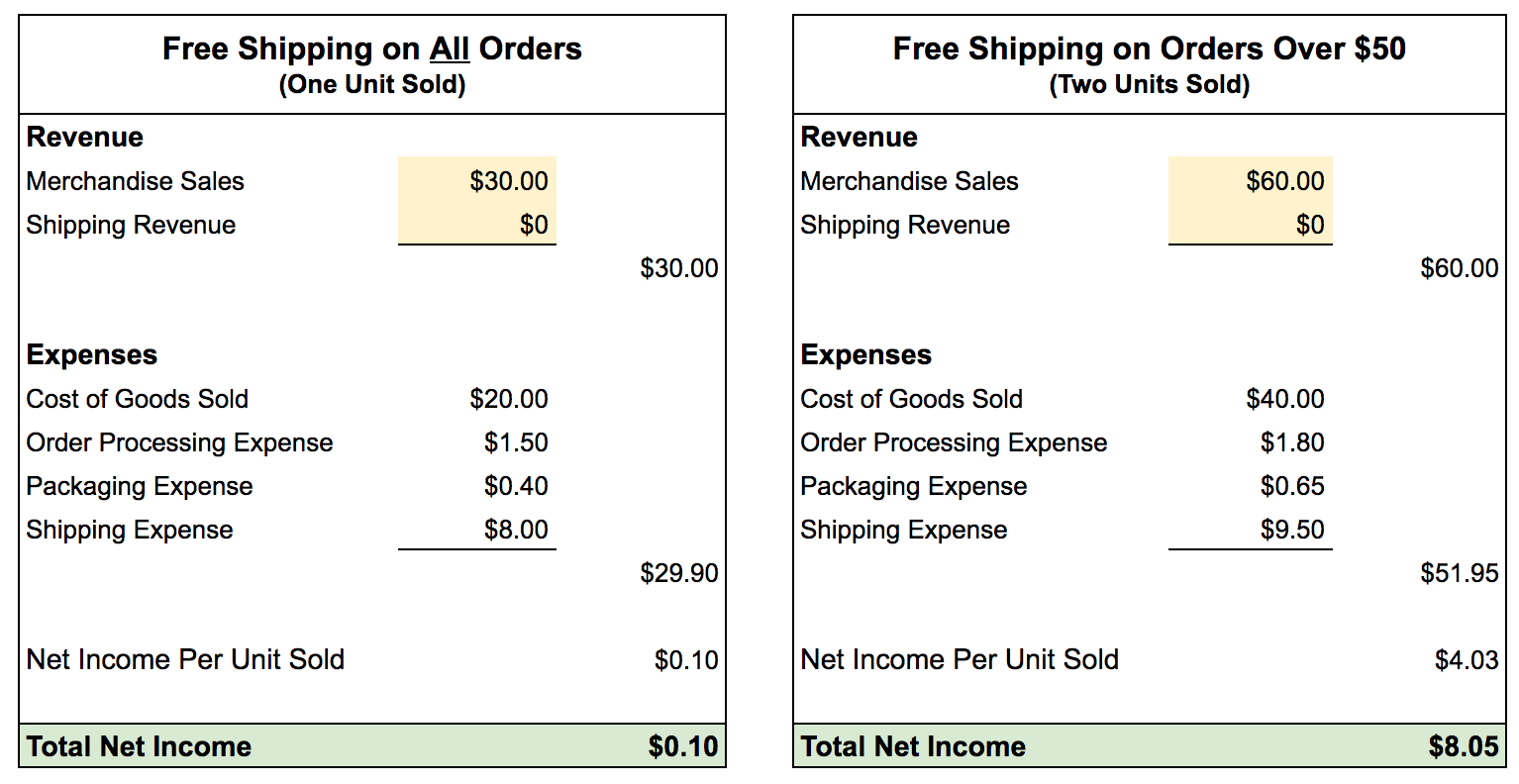
In this example, offering free shipping on just one item yields a net income of only $0.10. If you sell two items and ship them for free the net income increases to $8.05. (Click image to enlarge.)
If the seller were to offer free shipping on all orders, then that seller would make close to zero profit on a single-unit sale. However, if the seller offered free shipping when the order value was at least $50— requiring the customer to buy two units in this simplified example — the seller would then make a profit of $4.03 per unit.
Coupons for minimum purchase amounts. Coupons can also encourage multi-unit sales. It’s common to see coupons that discount the entire purchase, no matter what the order amount is. However, to encourage multi-unit sales, discount the order only after a certain value has been reached, similar to the free shipping example above.
Below are the numbers if this seller were to offer a 10 percent discount on all orders of at least $50 — while maintaining a flat rate shipping offer of $5.
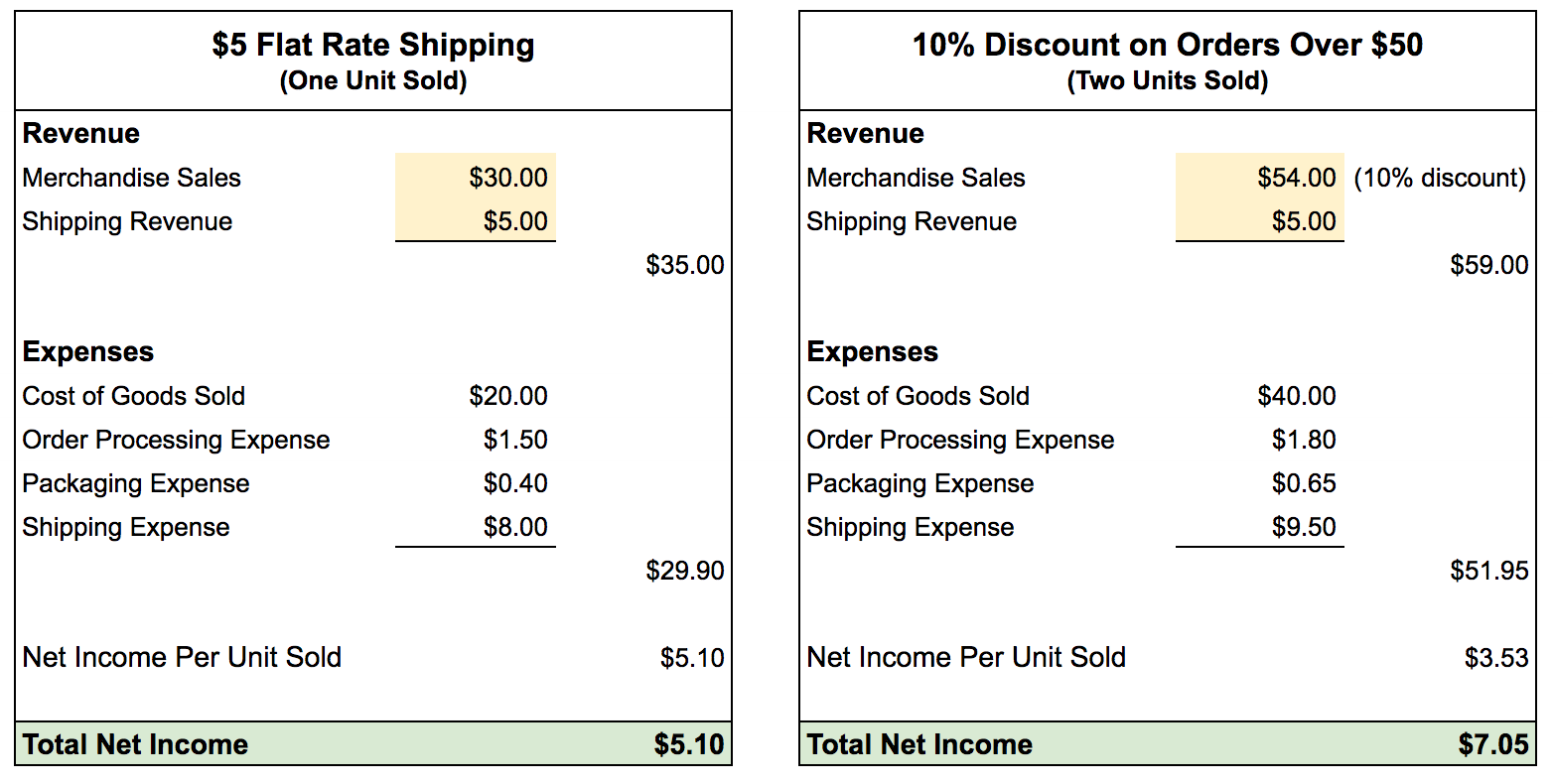
Offering flat rate shipping for $5 produces a net income of $5.10 for a single unit sold. When two units are sold with a 10 percent discount, the net income increases to $7.05. (Click image to enlarge.)
In this case, for two units sold the seller would generate $1 less of total profit versus the free shipping offer, as the 10 percent discounted order generated less revenue.
Add-on products. Another strategy to encourage multi-unit sales is to dynamically offer related products as consumers place items in their baskets. For example, if a consumer adds a skateboard to her basket, offer her helmets, knee pads, and elbow pads, too.
This strategy can be effective at not only driving multi-unit sales, but also at earning a larger profit on lower-margin goods. Below is the profit associated with a consumer adding two items to his basket: a $30 item and a small $10 low-margin add-on item. Due to the smaller size of the add-on item, the packaging and shipping expense are less than previous examples, above.
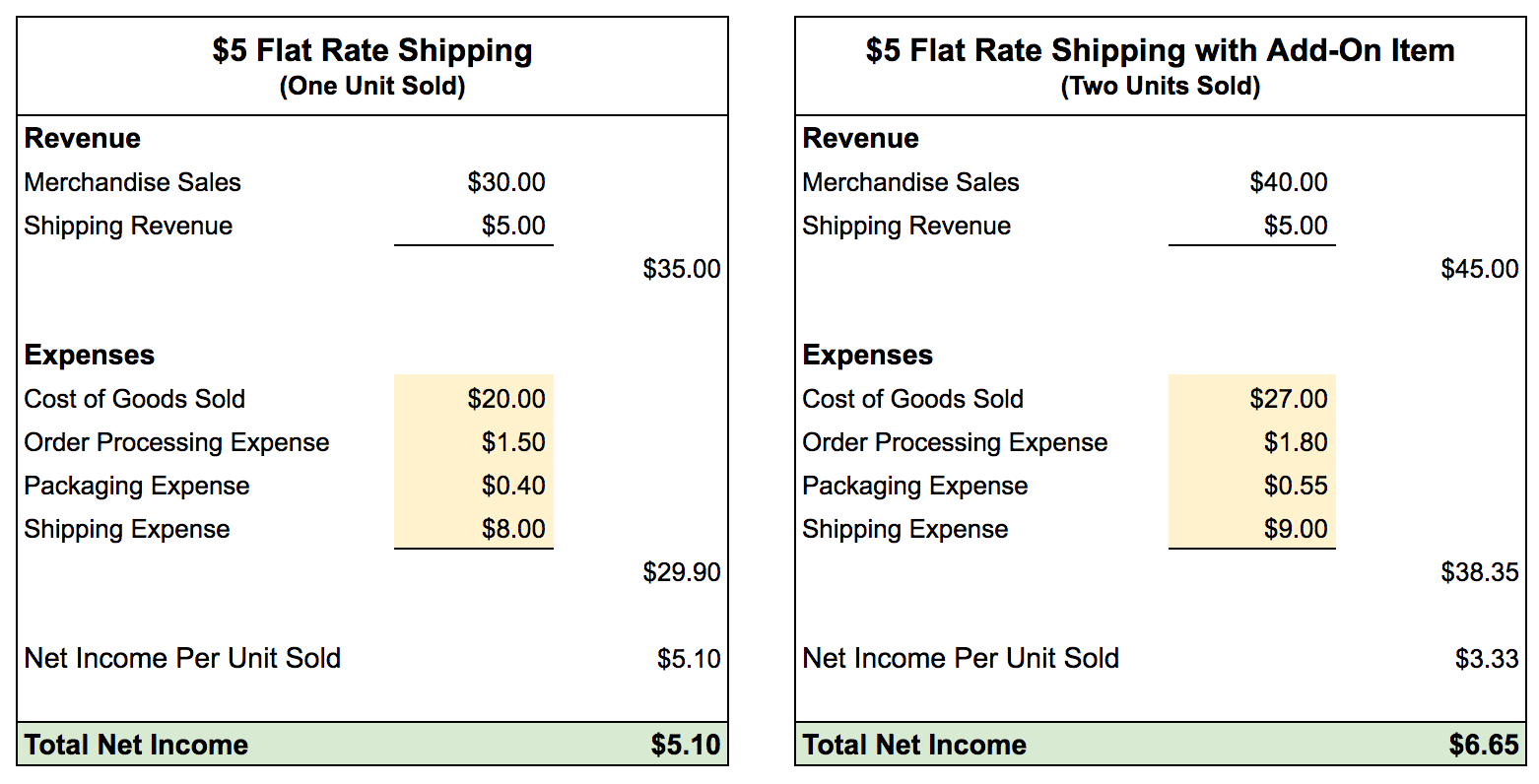
In this example, offering flat rate shipping for $5 produces a net income of $5.10 for a single unit sold. When an add-on item is added, the net income increases to $6.65. (Click image to enlarge.)
For add-on products, consider A/B testing to determine the impact. For instance, start by not offering any discounts on the add-on merchandise and test the multi-unit conversion rate. Then, test a discount on those add-on items to see if the conversion rate improves.
Bundled units. Rather than ask your customers to add extra items to their baskets, do it for them by bundling units together.
Say you sell weight-loss supplements that come in bottles, good for a 30-day supply. Consider offering two-packs, for a 60-day supply, and offer discounts for those larger purchases.
Here are the revenue, expenses, and profit associated with a 10 percent discount on a two-pack.
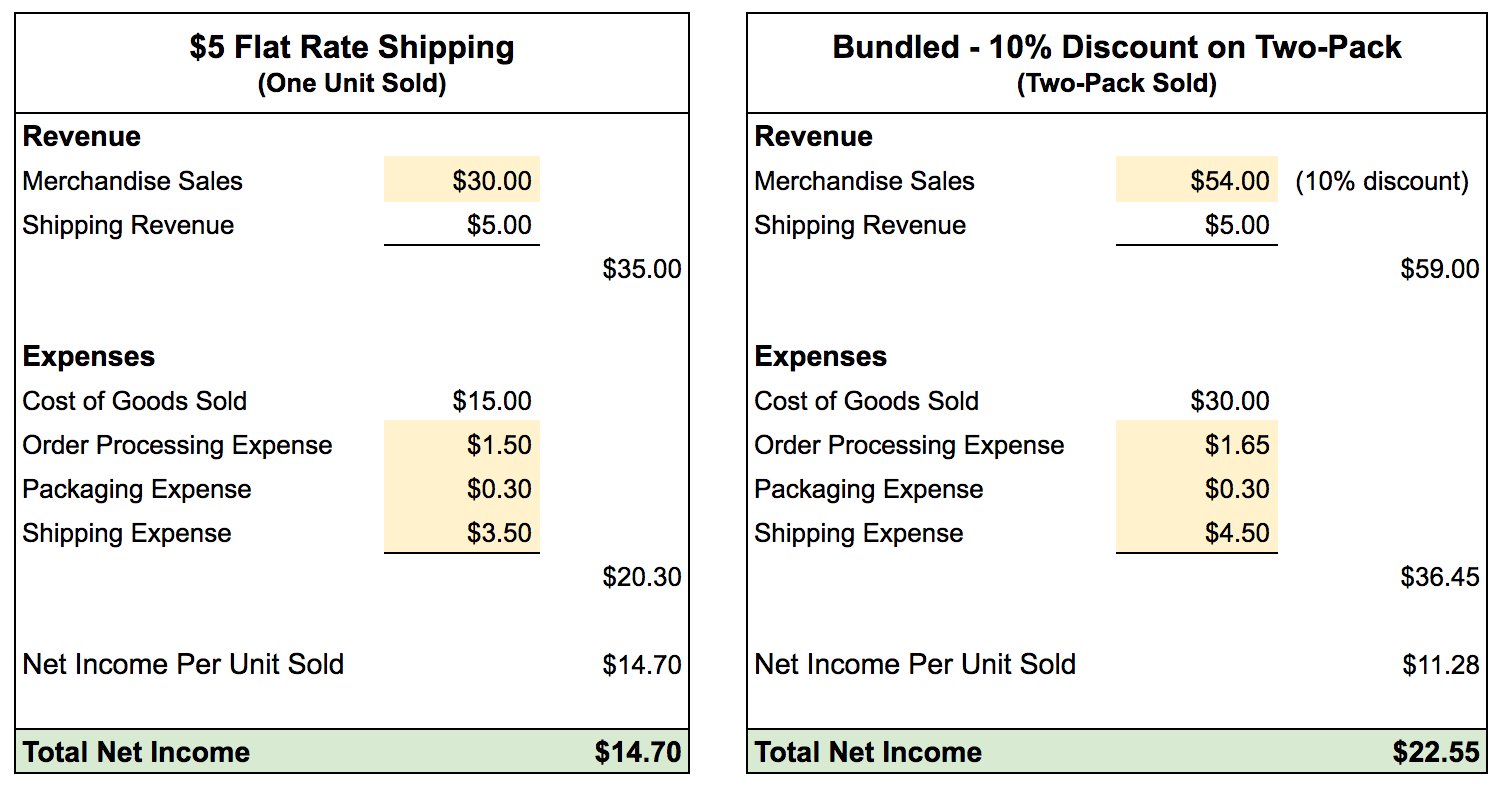
In this example, offering flat rate shipping for $5 produces a net income of $14.70 for a single unit sold. When a two-pack is sold with a 10 percent discount, the net income increases to $22.55. (Click image to enlarge.)
Note that for this example I adjusted the expenses section from the previous scenarios. I’m assuming this product has a higher margin, which is one of the reasons the two-pack offer works. The pill bottles are also lightweight, which means a reduced shipping expense, and to add one or two more of the same SKU adds very little to the order processing expense. Lastly, the same shipping box can be used in both scenarios, adding no additional expense for packaging as orders get larger.
In short, as you incentivize your customers to build larger baskets, the per unit net income goes down, but the total net income increases. This allows you to lower your prices — and prosper.


